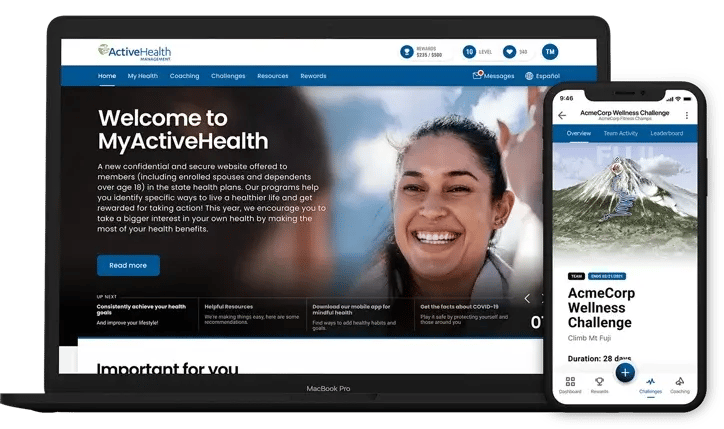
Agile UX Design Process: Merging UX and Agile Development for Success
Written by Katie Bielawiec
Key Takeaways
-
What is the UX design process?
The UX design process involves understanding user needs and behaviors to create effective software. It includes user research to ensure the design meets user needs, saving time and costs. -
What is an Agile process?
An Agile process is a development methodology that breaks down development into sprints, with visual design mockups from the UX design process guiding each sprint. -
How do they work together?
In Agile, the UX design process is an important step. It involves creating visual mockups to guide the team, ensuring user feedback is incorporated and the product aligns with user needs. We also review benefits and common pitfalls.
Time to read: 10 min
UX DESIGn IN an AGILE process
Integration and Challenges
In today's software development landscape, integrating User Experience (UX) design into the Agile process represents a significant advancement in product creation. While this integration offers benefits, it also presents challenges. Each discipline has its own methods and priorities, which can lead to barriers that impede collaboration and affect the final product's quality. The traditional separation between UX’s focus on user-centric design and Agile’s iterative, sprint-based approach can make it difficult for UX to keep pace with rapid development cycles.

Research and Methods
An important step in this integration is the research phase, where gathering and analyzing user requirements, conducting user research, and creating user personas, flows, and journey maps provide valuable insights to shape the design. This article examines how UX principles can be integrated into Agile development, discussing the challenges and methods involved in merging these approaches. We aim to find solutions to improve cooperation, ensuring both user satisfaction and effective product development.
WHO ARE WE? AGILE MASTERS
-
At Seamgen, we employ a Hybrid Agile software development process focused on releasing rapid iterations into test environments.
-
Over a decade of experience with agile methodologies leading to optimal, successful software deliveries.
-
Projects kickoff with design, development, and project management teams working collaboratively.
-
USA design led San Diego custom software development company based in Southern California.
-
We invite you to call us for a free project consultation.
UX Design Principles
User Experience (UX) design, as a part of the Agile process, is rooted in several core principles that guide its approach to crafting intuitive and user-centric interfaces. Understanding user behavior is important for analyzing how users interact with a product and improving their overall experience. At its core, the discipline prioritizes understanding user behaviors, needs, and preferences to create seamless and engaging experiences. Principles such as user empathy, usability, simplicity, and consistency serve as guiding beacons for UX designers.
 User empathy involves putting oneself in the user’s shoes, as well as comprehending their motivations, frustrations, and goals.
User empathy involves putting oneself in the user’s shoes, as well as comprehending their motivations, frustrations, and goals.
-
Usability focuses on ensuring the ease of interaction and navigation within a product.
-
Simplicity strives to streamline the user journey, eliminating unnecessary complexities.
-
Consistency maintains familiarity across interfaces.
These principles collectively form the foundation of the UX design process, shaping how products are conceptualized, designed, and evaluated.
Agile QA Methodology Overview
The Agile Quality Assurance (QA) methodology is a robust framework for iterative software development that promotes collaboration, adaptability, and efficiency. It operates on principles such as iterative development, frequent feedback, and incremental delivery.
Understanding Agile Process
Agile QA involves breaking down the development process into manageable chunks called sprints or iterations, each producing a potentially shippable product increment, guided by UX design mockups.
Sprint Steps
Each iteration(sprint) includes the following steps: Plan, Design, Develop, Test, Deploy, and Review.

Continuous Improvement and Adaptability
These iterations undergo rigorous testing and feedback loops, allowing for continuous improvements. Collaboration among cross-functional teams, including developers, testers, and product owners, is pivotal in Agile QA, ensuring that each sprint delivers value and aligns with the evolving requirements.
Agile methodology values adaptability, enabling teams to respond to changing priorities and customer feedback throughout the development lifecycle, promoting a flexible approach to product creation.
UNDERSTANDING AGILE UX INTEGRATION
The Role of the Design Step in Agile
The Design step in Agile is important for creating visual design mockups and gathering user insights that guide the development team. Mapping out the user flow is essential to visually represent the entire journey a user follows within the product. Designers need to focus on user behaviors, needs, and preferences to craft intuitive and user-centric interfaces. Designers communicate their visions through UX deliverables.

UX Deliverables in the Design Step
Deliverables in the Design are artifacts that provide clear direction for the development team, ensuring that the product aligns with user needs and expectations. These include the following items.
-
User Personas: Detailed profiles of archetypical users that guide design decisions by representing the target audience’s behaviors, needs, and goals based on user research.
-
User journey maps - Visual narratives that depict the steps and experiences users go through to achieve a specific goal within the product.
-
Design Systems: A collection of reusable components and guidelines for building interfaces that ensure consistency and efficiency in design and development.
-
Wireframes - Low-fidelity, skeletal blueprints that outline the basic structure and layout of a product’s interface.
-
Visual design mockups and Prototypes: Detailed, high-fidelity representations of the product’s interface that illustrate the final appearance and user interactions, as well as interactive, working models that simulate user interactions and functionality for testing and feedback.
-
Usability test results - Findings and data collected from evaluating a product’s interface with real users to identify areas for improvement.
-
User Flows: Diagrams that visually map out every step the user takes within the product, illustrating their path from the starting point to the ultimate interaction.

Example of a User Personas/Journey Maps that we have done here
Benefits of the Design Step
The Design step is vital for laying a solid foundation for development. By creating comprehensive visual and functional guidelines, it ensures that the product development process is user-centric and aligned with the project's goals. It also enables the team to incorporate continuous feedback, leading to a higher quality product.
-
Benefit #1: Provides clear direction for development - Creates a comprehensive guide for the development team, ensuring all elements are built according to the design specifications.
-
Benefit #2: Ensures user-centric design - Focuses on user needs and preferences to create a product, based on user research, that is intuitive and satisfying to use.
-
Benefit #3: Facilitates continuous user feedback - Encourages ongoing input from users throughout the development process to make iterative improvements.
-
Benefit #4: Enhances overall product quality - Improves the final product by integrating user feedback and adhering to design principles, resulting in a superior user experience.
KATIE BIELAWIEC
Senior Project Manager, Seamgen
Katie, our Senior Project Manager at Seamgen, is a dedicated professional with a robust foundation from the University of California, San Diego (UCSD). With experience spanning diverse roles and industries, from Achieve Internet to leading digital initiatives at Seamgen, she has a proven track record of steering successful projects and showcasing unparalleled expertise in the realm of project management.
Contact Us to Talk About Your Agile Project
Challenges of Poor Execution in the UX Design Process
When the UX Design process is poorly executed, it can lead to significant issues throughout the rest of the Agile sprints. Without clear and thorough design deliverables, development efforts can become misaligned, resulting in a product that fails to meet user expectations and project goals. Additionally, inadequate UX design can cause communication gaps between teams and stakeholders, further complicating the development process.
-
Challenge #1: Misaligned development efforts - Poor UX design process documentation can lead to inconsistencies between the envisioned product and the final implementation, causing the development team to miss essential details.
-
Challenge #2: Poor user experience - Neglecting user needs and preferences in the design phase results in a product that is difficult to navigate and frustrating to use.
-
Challenge #3: Increased rework and delays - Incomplete or unclear UX design specifications require frequent revisions and fixes, extending the development timeline and increasing costs.
-
Challenge #4: Communication gaps between teams - Lack of detailed UX design process artifacts can lead to misunderstandings and misalignment on project goals, hindering effective collaboration and productivity.
By understanding and effectively executing the UX design process, Agile teams can create high-quality, user-friendly products that meet user needs and expectations.
Seamgen Pro Tip: Example here
ADAPTING UX DESIGN for Agile vs. Waterfall
In Agile, the UX design process must be adapted due to the shorter, two-week sprint cycles compared to the longer development periods in Waterfall. These brief sprints require the UX team to execute the design phase differently than they would in a Waterfall process.
Key adjustments include:
-
Condensing User Research Efforts: Shorten research phases, focusing on key insights to inform immediate design decisions, ensuring a deep understanding of users' needs.
-
Rapid Prototyping: Utilize quick, iterative prototyping techniques to swiftly validate ideas and gather feedback.
-
Prioritizing User Testing: Conduct user testing within shorter time frames to ensure ongoing feedback and iterative improvements.
-
Incremental Design Improvements: Emphasize small, continuous improvements that align with Agile’s pace, maintaining user-centric design throughout the iterative process.

Example of a Seamgen Rapid Prototyping that we have done here
Collaborative strategies for Designers and QA teams
Collaboration between Designers and Quality Assurance (QA) teams within an Agile environment is important for successful product development. Establishing collaborative strategies involves open communication channels, a shared understanding of goals, and mutual respect for each other’s expertise.
Designers and QA teams should work together from the beginning, defining user requirements and acceptance criteria. This collaboration ensures the UX design process aligns with QA testing needs, optimizing the design process to deliver functionalities that are both user-friendly and well-tested.
Techniques such as joint brainstorming sessions, cross-functional workshops and user research, and regular feedback loops help bridge the gap between the UX design process and the rest of the Agile. As users interact with the product and provide feedback, it is important to continuously improve the user experience by making small changes and refinements over time. These practices promote a culture of shared responsibility and collective ownership over the product’s quality and user experience. Effective collaboration between these teams leads to a smoother Agile UX design process, enhancing overall product quality and user satisfaction.
List of Strategies for Designers and QA Teams
Open Communication Channels
Shared Understanding of Goals
Mutual Respect for Expertise
Joint Brainstorming Sessions
Cross-Functional Workshops
Regular Feedback Loops
Defining User Requirements and Acceptance Criteria Together
Shared Responsibility and Ownership
Tools for seamless Agile UX integration
For the UX design process in Agile, designers need all the standard tools for designing, collaborative communication tools, and access to the project management tools used by the rest of the team to manage work items during sprints. Here are the tools we use at Seamgen and the benefits they provide:
In addition to these tools, incorporating UX research is important for guiding product development, understanding user needs, validating design, uncovering user struggles, and improving user satisfaction.
Adobe Suite: The Adobe Suite is essential for creating high-quality graphics and design elements. It includes powerful tools like Photoshop and Illustrator, which are essential for detailed graphic design work.
- Benefits: Provides a comprehensive set of tools for graphic design, ensuring that all visual elements are polished and professional. The ability to create detailed designs and manipulate images is vital for creating compelling user interfaces.
Figma: Figma is a collaborative interface design tool that allows multiple designers to work on the same project simultaneously.
- Benefits: Enables real-time collaboration, which is essential for integrating feedback quickly and efficiently. Figma's cloud-based platform ensures that all team members have access to the latest design versions, facilitating seamless updates and iterations.
Slack: Slack is our primary tool for internal team communications, allowing for instant messaging, file sharing, and organized conversations through channels.
-
Benefits: Enhances team collaboration by providing a platform for quick and efficient communication. Channels help keep discussions organized by topic, making it easier to track conversations and updates. Slack also integrates with other tools, streamlining workflow management.
Jira: Jira is our tool for managing Agile workflows, including sprint planning, task tracking, and project management.
-
Benefits: Provides a robust platform for tracking progress and managing work items during sprints. Jira's features, such as user stories, backlogs, and burndown charts, help ensure that the team stays on track and that all tasks are clearly defined and prioritized. The integration of UX tasks into Jira ensures that design work is aligned with development goals and timelines.
ASPECTS OF UX DESIGN WITHIN AN AGILE PROCESS
The integration of UX design within the Agile process involves utilizing a variety of techniques that promote collaboration, efficiency, and user-centric development. These techniques help UX teams adapt their workflows to the iterative nature of Agile, ensuring that user needs are consistently addressed throughout the product development cycle.
Below are key techniques that UX design teams can use to enhance their effectiveness in an Agile environment:
Design Sprints
User Story Mapping
Persona Development
Journey Mapping
Wireframing
Prototyping
Usability Testing
A/B Testing
Continuous User Feedback
Cross-Functional Workshops
Kanban Boards
Pair Design
Heuristic Evaluation
Design Systems
Seamgen Pro Tip: Example here
IMPACT ON PRODUCT DEVELOPMENT
The UX Design process within Agile QA influences the trajectory of product development. This integration changes how products are conceptualized, designed, and delivered to users by making the development process more user-centric. Incorporating user insights, empathy, and usability principles into each iteration, the product development cycle becomes focused on meeting user needs.
Understanding how the user interacts with the product is important for identifying pain points and developing user journeys that enhance the overall user experience.
Examples of successful integration
Numerous examples exist where the seamless collaboration between UX designers and Agile teams has led to remarkable outcomes. At Seamgen, we have adopted a Hybrid Agile process incorporating a mix of Waterfall and Agile processes. Here are some Seamgen case study examples of experiences we have had with the UX design process in the Agile.
Case Study #1 - Seamgen and Kia

Seamgen embarked on a transformative journey with Kia, addressing the challenge of enhancing the Kia Owner's Portal amid the burgeoning landscape of connected cars. By integrating Agile and UX methodologies, we not only revamped the outdated applications and login pages but also crafted a vibrant, engaging experience for Kia owners. The implementation of thoughtful user experience design immediately elevated the platform's functionality and appeal.
Our continuous support ensured a modern, user-friendly design that resonated across all applications within the Kia Owner's Portal. Our collaboration with Kia extended beyond mere updates, allowing a lasting partnership marked by ongoing enhancements driven by extensive user research, competitive analysis, and a commitment to redefining how Kia owners access and maximize the potential of their vehicles through an intuitive, responsive interface.
Case Study #2 - Seamgen and Active Health

Seamgen's transformation of Active Health Management's dated platform into a modernized, user-centric ecosystem showcases the pivotal role of Agile-UX integration. Embracing an iterative and user-focused approach, we strategically collaborated with ActiveHealth, a subsidiary of CVS Health®, to redefine personal healthcare. Through an extensive discovery and strategy phase, Agile methodologies were interwoven into the process, enabling our team of experts to define a comprehensive project roadmap.
Leveraging an Enterprise Design System and adopting a modular and automated approach, Agile-UX integration empowered the design and development team to swiftly create and test UX prototypes, maximizing efficiency and reducing costs. Our seamless collaboration, guided by Agile principles, enabled the transformation of a monolithic .NET MVC solution into a more responsive and engaging platform built on .NET Core and React. This Agile-UX synergy culminated in a renewed and robust population health management tool that enhances engagement, facilitates health education, and incentivizes users to prioritize their well-being.
Case Study #3 - Seamgen and the San Diego Zoo

Embarking on a digital guest experience journey with the San Diego Zoo and Safari Park posed a unique challenge due to limited cellular connectivity across the vast parklands. Seamgen stepped in to craft an innovative solution—an interactive mobile app merging sleek design with robust location services. By harmonizing Agile methodologies and UX design principles, we delivered a groundbreaking app offering visitors quick and efficient navigation, despite the park's limited Wi-Fi and cell coverage.
Leveraging GPS-based wayfinding technology and GIS data, the app transformed the guest experience, guiding users seamlessly to exhibits, dining spots, and amenities while showcasing the parks' incredible wildlife. Overcoming the transition from print to digital, our team ensured an ADA-compliant and engaging interface. This success story exemplifies how Agile-UX integration enhances user experiences, encouraging innovation even in connectivity-challenged environments.
BEST PRACTICES AND RECOMMENDATIONS
There are best practices and guidelines that help teams collaborate effectively, stay user-focused, and improve Agile UX integration. Following these strategies, teams can work through challenges, combine the strengths of both approaches, and improve the product development process to create user-friendly, efficient, and successful outcomes.

Tips for effective collaboration between UX and Agile teams
Collaboration Tip #1: Early and Continuous Collaboration:
-
Inclusive Sprint Planning: Involve UX design principles from the project’s outset, ensuring they shape the sprint planning process. Early involvement sets the stage for collaborative decision-making.
-
Ongoing Communication: Encourage constant communication between UX designers, the agile team, developers, testers, and product owners throughout the project. Regular meetings, joint reviews, and shared documentation facilitate a cohesive workflow. UX designers play an essential role in defining user needs, creating wireframes, and ensuring usability in design.
Collaboration Tip #2: Adaptation and Flexibility:
-
Iterative Adaptation: Embrace an iterative approach not just in product development but also in process improvement. Continuously evaluate the integration of UX within Agile QA, adapting methodologies and workflows based on evolving project needs and team feedback.
-
Flexibility in Methods: Allow flexibility in UX methods to fit Agile cycles without compromising the essence of user-centric design. Implement rapid prototyping, lightweight user testing, and concise user research methodologies tailored to Agile iterations.
-
Cultivate a Shared Mindset: Encourage a culture where all agile UX team members, regardless of their role, take responsibility for the user experience. Encourage cross-functional collaboration and a shared sense of ownership over the product’s success.
-
Cross-Pollination of Skills: Encourage skill-sharing sessions where the UX design team can learn from the Agile team and vice versa. This mutual learning enhances understanding and empathy among team members.
-
User-Centric Storytelling: Integrate user stories and personas into Agile frameworks to ensure that user needs remain central to all development decisions. Visualize user journeys and experiences to guide the team’s direction.
-
Regular User Feedback: Incorporate frequent user feedback loops within Agile iterations to validate assumptions, iterate on designs, and ensure that the product evolves in line with user expectations.
Collaboration Tip #4: Documentation and Knowledge Sharing:
-
Comprehensive Documentation: Maintain detailed documentation of UX decisions, user research findings, and design rationale to ensure continuity and facilitate knowledge sharing among team members.
-
Post-Iteration Reviews: Conduct post-iteration reviews that encompass both UX and Agile perspectives. Reflect on what worked well, what could be improved, and implement these learnings in subsequent iterations.
Seamgen Call to Action Here
WRAPPING UP
The UX Design process within Agile ensures that product development remains user-focused and adaptive to changing needs. By aligning UX activities with Agile sprints, teams can create intuitive and satisfying user experiences. Collaborative strategies, appropriate tools, and effective techniques promote seamless integration and enhance product quality. At Seamgen, we use a Hybrid Agile approach has led to successful outcomes with clients like Kia, Active Health, and the San Diego Zoo.
By refining UX workflows and maintaining open communication, organizations can navigate the complexities of Agile development. Embracing best practices and learning from successful integrations will help teams deliver products that meet user needs and exceed expectations.









